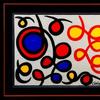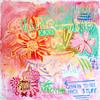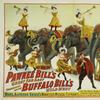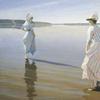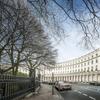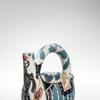DUSTI BONGÉ ART FOUNDATION ANNOUNCES NEW PUBLICATION: "DUSTI BONGÉ, ART AND LIFE: BILOXI, NEW ORLEANS, NEW YORK"
- BILOXI, Mississippi
- /
- July 15, 2019
The Dusti Bongé Art Foundation today announced a major new publication—Dusti Bongé, Art and Life: Biloxi, New Orleans, New York—the first to document the full range of the artist’s exceptional life and long career. Mississippi’s pioneering Abstract Expressionist, Bongé (1903–93) was active in the burgeoning New York art scene and creative communities along the Gulf Coast from the 1930s through the early 1990s. The author, J. Richard Gruber, Ph.D., Director Emeritus of the Ogden Museum of Southern Art (the Ogden), examines Bongé’s art and vision from a regional and national perspective within the evolving cultural context of 20th century American art and society.
The publication coincides with Piercing the Inner Wall: The Work of Dusti Bongé, an in-depth exhibition curated by Bradley Sumrall comprising 76 paintings and over 50 works on paper and currently on view at the Ogden through September 8, 2019.
Dusti Bongé Art Foundation Director Ligia M. Römer, Ph.D., said, “On behalf of our Board of Directors, we are thrilled to launch this comprehensive publication showcasing Dusti Bongé’s vibrant artworks and providing in-depth insights into her life, practice, and experiences in these three cities. For those less familiar with her work, we expect this will be an extraordinary discovery. We are grateful to those who supported this endeavor—particularly Paul Bongé for his invaluable contributions. Rick Gruber’s deep knowledge and research resulted in a gorgeous publication offering a far richer understanding of the career of this exceptional artist and the times in which she lived. We are delighted that her bold palettes and imaginative compositions have been captured in new photography commissioned for this book. With the book and Ogden exhibition, we are delighted that Dusti’s legacy continues to flourish and reach new audiences.”
Featuring over 500 color and black-and-white illustrations—including a breadth of examples of the artist’s prodigious oeuvre—the 352-page book demonstrates how Bongé’s work was informed by her experiences in three distinctive American cities with progressive art scenes—Biloxi, New Orleans, and New York.
Following an early career as an actor, Bongé was inspired by her husband, the artist Archie Bongé, to explore drawing and painting. Having been a student, including at the Art Students League of New York and the Pennsylvania Academy of the Fine Arts in Philadelphia, Archie recommended that she eschew a traditional art education in favor of following her own aesthetic instincts and exploring her natural talent. Two years after returning to Biloxi to raise their son Lyle and set up a studio, Archie died prematurely in 1936. Dusti found solace in the studio and began painting in earnest, experimenting with a range of styles.
Widely considered to be the first Mississippi artist to work consistently in a Modernist style, Bongé created a body of work that moved from figurative and Cubist depictions of her Mississippi home in the late 1930s, through a period of Surrealism, and into an Abstract Expressionist style that defined her mature work. The book traces Bongé’s development, both artistically and spiritually through her explorations of the unconscious, and the inspiration she drew from the Gulf Coast and New York.
The publication reveals how she was influenced by her associations with eminent art-world figures including ground-breaking gallerist Betty Parsons; artists George Dunbar, Hazel Guggenheim, Barnett Newman, and Theodore Stamos; her artist son Lyle Bongé and photographer grandson Paul Bongé; and others. Gruber delves into her pivotal relationship with Parsons and with other artists represented by the Parsons Gallery that included Agnes Martin, Louise Nevelson, Barnett Newman, Jackson Pollock, Mark Rothko, Clyfford Still, and Robert Rauschenberg.
Dusti Bongé, Art and Life considers how she inhabited and, in her work, reflected what Gruber calls her distinctive “sense of place” in Biloxi and New Orleans and their historic links to the New York City art scene. The book presents the full range of Bongé’s creativity, extending from her stage acting to her activities in painting, sculpting, printmaking, sewing, writing, and poetry. Her creative vision and dedication to her practice resulted in a body of work that stands as an important contribution to postwar American art.
Dusti Bongé, Art and Life: Biloxi, New Orleans, New York was designed by Phillip Collier Design Studio, New Orleans, LA, and is distributed by the University Press of Mississippi.
Lead support for the research and publication project was provided by the Dusti Bongé Art Foundation (DBAF). The DBAF was established in 1995 in Biloxi, MS, to honor and promote the artist’s extensive and impressive oeuvre through exhibitions, conservation, scholarship, and education. Additional support for the publication was provided by Mrs. Nancy S. Breeland, The Peoples Heritage Foundation, Rob McMichael and T. Jackson Lyons, Mr. Roger Ogden, Liz and Art Spratlin, and Stephen A. Stojcich, AIA.
About Dusti Bongé (1903‒1993)
Born in 1903 in Biloxi, Mississippi—a thriving seafood port city and resort destination—Dusti Bongé (née Eunice Lyle Swetman) was the youngest of three children of a prominent banker. After graduating from Blue Mountain College, she moved to Chicago to study acting. In the 1920s, she worked as an actor in Chicago and New York, appearing on stage and in silent films. In 1928, she married painter Archie Bongé who encouraged her natural abilities as an artist. Their son, Lyle, was born a year later and the family moved to Biloxi in 1934. Archie built a studio in their backyard but, in 1936 he succumbed to ALS (or Lou Gehrig’s disease). While raising Lyle and grieving for Archie, Dusti assuaged her grief in the studio and devoted herself to painting.
She initially exhibited in New Orleans and Biloxi until 1939, when her work went on view at the Contemporary Arts Gallery in New York City. Her art career advanced dramatically when she joined the roster of the renowned Betty Parsons Gallery in midtown Manhattan. An artist and art dealer, Parsons was an early champion of the New York School and pioneers of Abstract Expressionism which was becoming a leading influence in the art world. In 1956, Dusti received her first solo exhibition at the Gallery, placing her in a select group of artists that included Jackson Pollock, Barnett Newman, Robert Rauschenberg, Mark Rothko, and Clyfford Still.
Continuing to be shown at Parsons Gallery until 1976, Bongé was a strong voice in the New York art scene for three decades. Yet, she mostly remained in Biloxi where she continued to produce new work until two years before her death, in 1993.
About the author
Richard Gruber, Ph.D., is an independent curator, art historian and writer, and Director Emeritus of the Ogden Museum of Southern Art in New Orleans. He also served as Director of the Wichita Art Museum; Director of the Memphis Brooks Museum of Art; Deputy Director of the Morris Museum of Art and Director of its Center for the Study of Southern Painting; and Co-Director of the Peter Joseph Gallery in New York.
Gruber has written and contributed to numerous publications and essays with a focus on artists of the American South. He received his doctorate in art history from the University of Kansas at Lawrence and M.A. in art history from the University of Colorado at Boulder. He taught art history and museum studies classes at the University of New Orleans, at Augusta State University, and at the University of Colorado, Colorado Springs.






